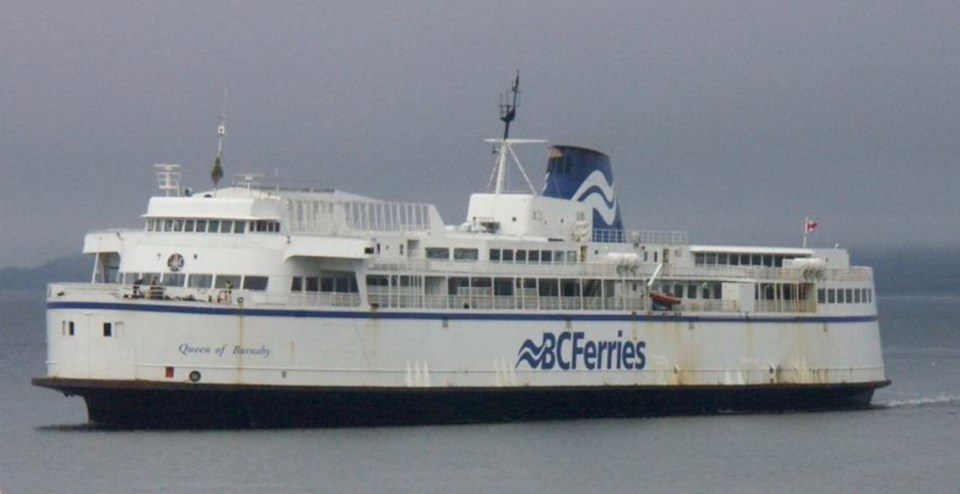B.C. Ferries has won approval to buy three new vessels and will seek to bring more standardization to its fleet with the purchase.
“We want to get to the point where much like a WestJet or an Air Canada, they go to Boeing to build a 737 or go to Airbus to build an A320. … We want to have a standardized fleet of intermediate-class ferries,” B.C. Ferries president and CEO Mike Corrigan said.
In a ruling released Tuesday, the B.C. Ferries Commissioner approved the three new vessels, which will replace the aging Queen of Burnaby and Queen of Nanaimo.
Corrigan put the price range “in the hundreds of millions,” and declined to be more specific before bids are submitted.
A standardized fleet will keep down costs with everything from maintenance to crew training and allow ships to serve a variety of routes, he said.
The current fleet’s 35 vessels include 17 classes or styles, and the corporation is looking to bring the number of classes down to four or five.
The ferries being replaced — the 48-year-old Burnaby, which sails from Comox to Powell River, and the 49-year-old Nanaimo, which serves the Tsawwassen-Southern Gulf Islands route — can each accommodate 192 vehicles and between 897 and 996 passengers and crew.
Plans for the three new ferries call for smaller vessels, two of which will carry up to 145 vehicles and 600 passengers and crew.
The third new ferry, with space for 125 vehicles along with 600 passengers and crew, will help with peak- and shoulder-season service on the Tsawwassen-Southern Gulf Island run. It will also be used as a relief vessel when the other new ships require refit.
Three to five similar vessels could follow, Corrigan said.
Bringing in smaller vessels will not cause capacity issues, he said.
He noted that the Queen of Burnaby is overbuilt for its Powell River run. “In fact, it’s functional capacity is about the same as what we’re going to replace it with — about 145 vehicles.”
On the Southern Gulf Islands and Saltspring runs, ferry users are getting two vessels as a replacement for one, he said.
“We’ll have two ships in the busy time of year leaving simultaneously from both terminals … so we can better distribute traffic.”
The contract is expected to be awarded in January 2014, with the two 145-vehicle ferries ready for service in 2016 and the 125-vessel ferry in 2017.
Corrigan’s predecessor, David Hahn, drew criticism when four new ferries were built in Germany at a cost of $592 million.
Corrigan said the contract for the new vessels will go to an international tender process.
“We’re going to request for pre-qualification with shipyards around the world, including Canada, so we’ll see who comes back and what they’re proposing, and if they have the capacity to build,” he said.
Transportation Minister Todd Stone said the B.C. government would be “very supportive” of the ferries being built in the province, but that B.C. Ferries is an “arm’s-length agency” and will make its own decision. “We can certainly say ‘Look, make sure that you balance the best-possible deal for taxpayers with the goal of creating as many jobs [as possible] here in British Columbia,’ ” Stone said.
Gary Holman, NDP ferries critic and MLA for Saanich North and the Islands, said the ferry contract should stay in the province. “It seems entirely consistent with the jobs plan that the Liberals have been touting. Here’s a perfect opportunity to generate jobs in B.C. that would also generate tax revenues.”
With liquefied natural gas prominent in the provincial government’s future plans, Corrigan said B.C. Ferries is looking closely at related technology to fuel its fleet.
“We’re bullish on LNG, but at the same time, we need to see how the proposals come back from the shipyards in terms of the premium that they’re going to charge us to install natural gas equipment — engines and ancillary equipment.
“At the same time we need to get some certainty on the delivered price of LNG at our facilities. It’s still a fairly infant market here in British Columbia.”
Additional reporting by Rob Shaw



